CA Environmental Initiatives
| Rank | Census subdivision | Population 2011 |
|---|---|---|
| 1 | 2nd Canadian Division - Quebec HQ Location: Montreal, Quebec |
 2nd Canadian Division |
| 1 | 3rd Canadian Division - Western Canada HQ Location: Edmonton, Alberta |
 3rd Canadian Division |
| 1 | 4th Canadian Division - Ontario HQ Location: Toronto, Ontario |
 4th Canadian Division |
| 1 | 5th Canadian Division - Atlantic Canada HQ Location: Toronto, Ontario |
 5th Canadian Division |
Note: 1st Canadian Division Headquarters is part of Canadian Joint Operations Command (CJOC).
2nd Canadian Division
2 Division: Foxes and Troops
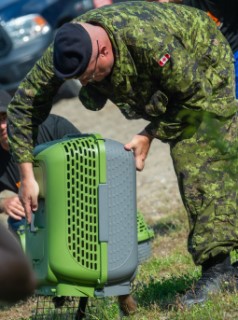
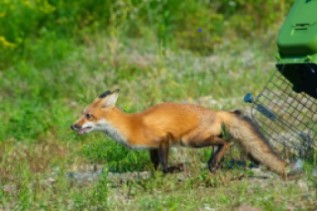
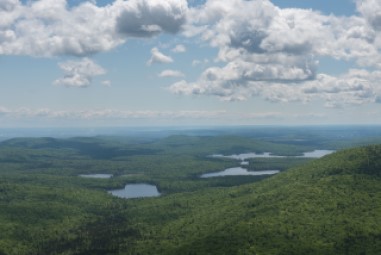
Captain (retired) Bruno Talbot probably never could have imagined experiencing something like this during his military career. And yet, this Range and Training Area (RTA) officer from 2 Division’s Canadian Forces Support Base Valcartier (CFSB Valcartier) coordinated the reintroduction of fox species into the wild in the summer of 2020.
After weeks of rehabilitation at the Miller Zoo in Beauce, Quebec, these four-legged were able to taste freedom. But why release these small creatures into a military training area at all? The answer lies in the unique ecosystem that covers the 200 square kilometers of territory in the RTA.
Valcartier’s training area, like any ecosystem, must be carefully managed, especially when it comes to minimizing the negative impacts from human activity taking place there every day.
It’s important to responsibly manage our environmental impact in the areas where the Canadian Armed Forces train, which is why the Defence Team created a policy that outlines its approach to greening its infrastructure and working against climate change. This also translates to less wasted energy, a smaller environmental footprint, and better management of our energy and environmental resources.
Thanks to the efforts of Miller Zoo owners Cliff and Émilie, and the dedication of Captain Talbot, this species of fox can once again be found in this habitat, just north of the Jacques-Cartier River.
3rd Canadian Division
3 Division: Cratering for Habitat Creation on Ex FROZEN SAPPER 2021
In February 2021, soldiers from 39 Combat Engineer Regiment conducted explosives training and bridge construction reconnaissance near Creston, British Columbia. With an invitation from the Lower Kootenay Band to use their land, soldiers practiced demolitions with beehive charges, C4 and TRIGRAN. As a result of the training, nine craters approximately 10 meters wide and 4 meters deep were created within the floodplains.
The idea of the army blasting large sections of land off National Defence property may seem problematic at first, but this practice can benefit the surrounding ecosystem by creating habitat. In the late 1960’s, wetlands in the Creston area evaporated and riparian species were lost. One of outcomes of Ex FROZEN SAPPER 2021 was to restore those wetlands used by the Lower Kootenay Band.
Craters are typically formed in straight lines, but during this exercise they were planned in a cluster. The intent was that water would naturally pool to form one wetland with shallower parts. The training event was a success, and now fish are being introduced to the newly-created wetland habitats.
In the past, training exercises have not been deliberately planned with environmental restoration in mind. But with training exercises like Ex FROZEN SAPPER 2021, we are seeing a better way to both enhance training of our forces, while also accomplishing ecological restoration, and strengthening the relationship between the Lower Kootenay Band and the Canadian Armed Forces.
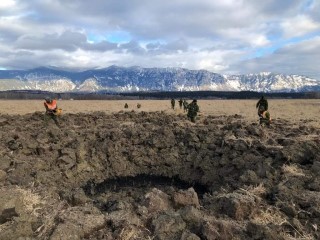
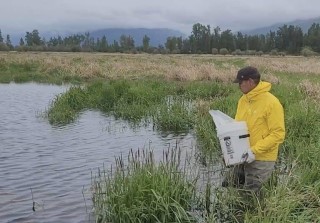
4th Canadian Division
4 Division: Tracking Wolves at Garrison Petawawa
The species at risk program at 4th Canadian Division Support Base Petawawa Environment Services helps ensure that training is conducted in a manner that is consistent with legislation and departmental policies that protect wildlife and the habitats required to sustain them. To accomplish this, understanding what species we have and where they are distributed throughout the property is key.
The small Eastern Wolf population is found between central Ontario and south-western Quebec, with the largest concentration in Algonquin Provincial Park, bordering Garrison Petawawa. The other two intermediate-sized canids in the region, the Eastern Coyote and the Grey Wolf, have mixed with the Eastern Wolf while also competing for territory and prey, however few, if any, of these species could be considered “pure”. Garrison Petawawa Environment Services is determining how much Eastern Wolf is in the canid gene pool, while also tracking the areas they use for denning and pup rearing.
The work of collecting DNA samples in a safe, non-invasive, cost-effective way is a challenge. Scat analysis shows potential, with recent advances in DNA collection and testing. Trace amounts of intestinal lining tissue rich in DNA is found in a layer of mucus on the exterior of the scat. While, unpleasant, this mucus is swabbed, and the sample preserved and send to a laboratory for analysis. There, they can amplify any mitochondrial DNA that is present in the sample.
Each scat sample provides insight into the degree of hybridization that is possible, challenging our understanding of what constitutes a “species”. Our growing pool of genetic information helps us identify trends and changes to the local population while advances in technology allow us to conduct this research without impacting the necessary training completed by the Canadian Armed Forces in the range and training area. For more information, check out 4 Division’s video here. (In English only, with French captions)
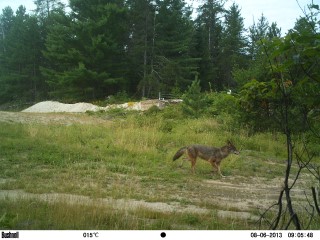
5th Canadian Division
5 Division: Assessment and Remediation of Fish Passage through Culverts.
Fish migrations can occur daily, seasonally, annually or only once in a lifetime, during which barriers are encountered. Man-made barriers like dams, dewatering of habitat, pollution, watercourse crossings, and culverts can delay, redirect or prevent their movement.
Culverts can interfere with fish passage due to low water depth, high water velocity, debris, and a hung or perched culvert outlet. At 5th Canadian Division Support Base (5 CDSB) Gagetown, 251 of the closed bottom culverts inspected in 2021 were found in poor or very poor condition, 258 were perched and 136 were fully plugged.
When installing or retrofitting a culvert to include a bridge or open bottomed culvert, the natural width and slope of the stream is maintained, ensuring water can maintain velocity and minimizing debris blockage. Other benefits include providing habitats for benthic invertebrates (organisms without a backbone that live on the bottom of a water body or in the sediment) and may be used as wildlife corridors. Fish can pass through an open bottom culvert as easily as they swim through the natural channel.
5th Canadian Division Support Group Environmental Services Branch is continuing the assessment of perched culverts in 2022 in partnership with Assistant Deputy Minister (Infrastructure & Environment) Real Property Operations Unit (Atlantic) Detachments Gagetown. As these culverts reach their end of life, open bottom culverts will be installed or other techniques to provide fish passage upstream of the road will be implemented. There are 50 open bottom culverts at 5 CDSB Gagetown at present, with more being added in the coming years to the benefit of local fish populations, helping to minimize our footprint in these habitats.
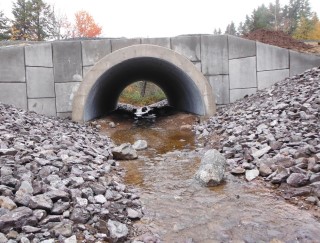
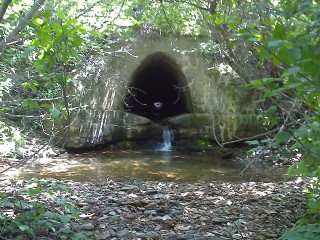
CADTC - Kingston
Canadian Army Doctrine and Training Centre (CADTC)
The mission of Canadian Army Doctrine and Training Centre (CADTC) is to plan and manage the intellectual development and training of the Canadian Army. That includes all personnel deployed as part of the Army under a Task Force or Joint Task Force.